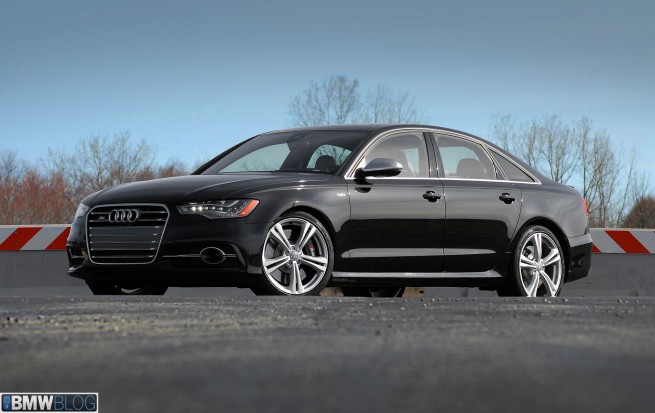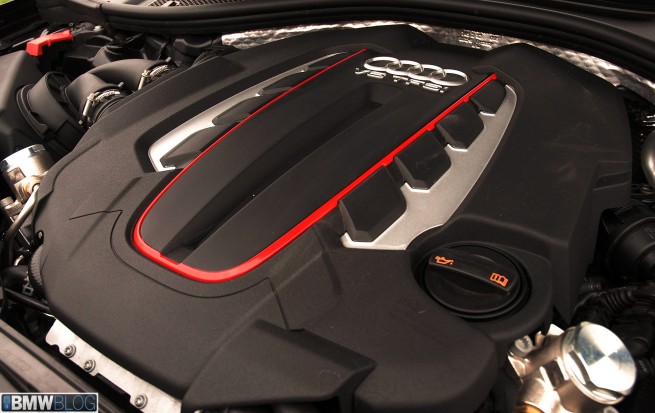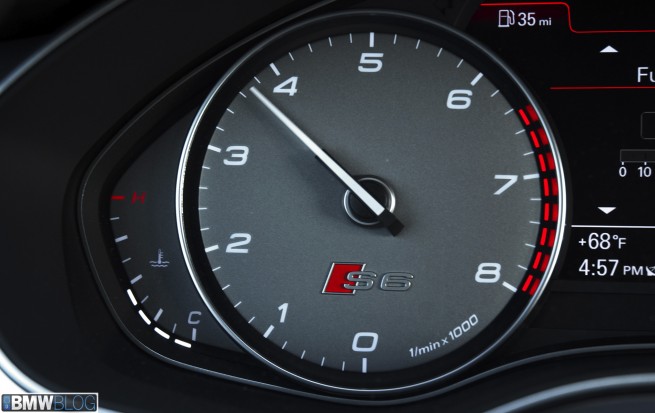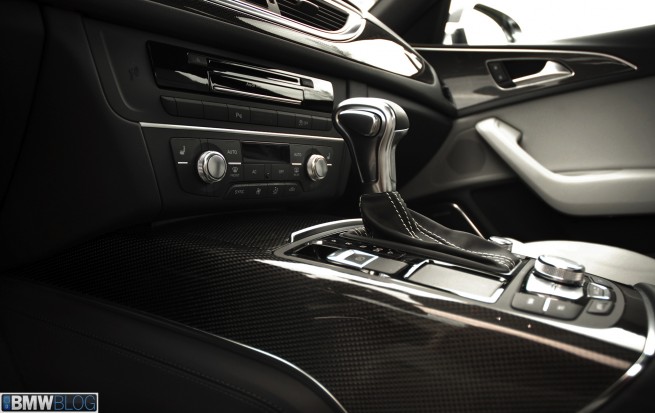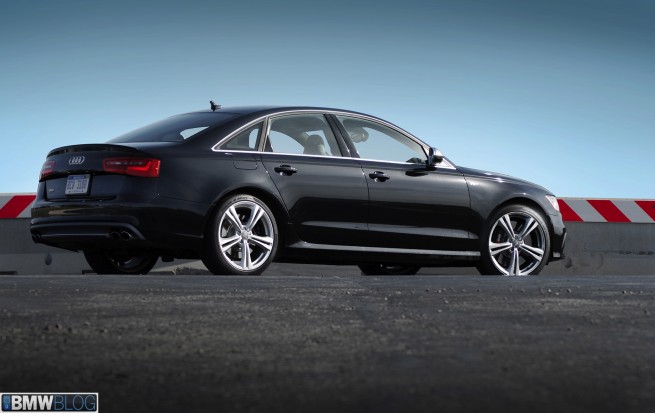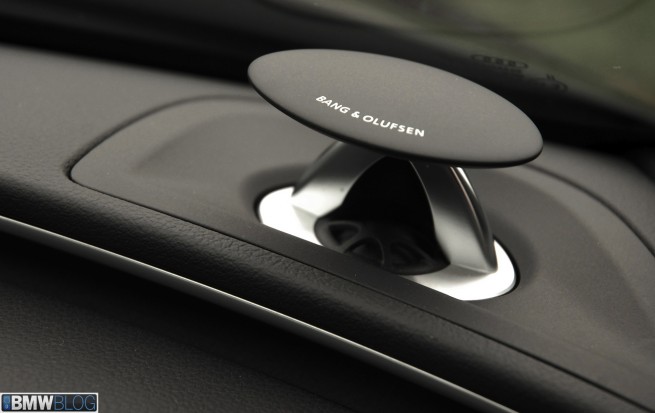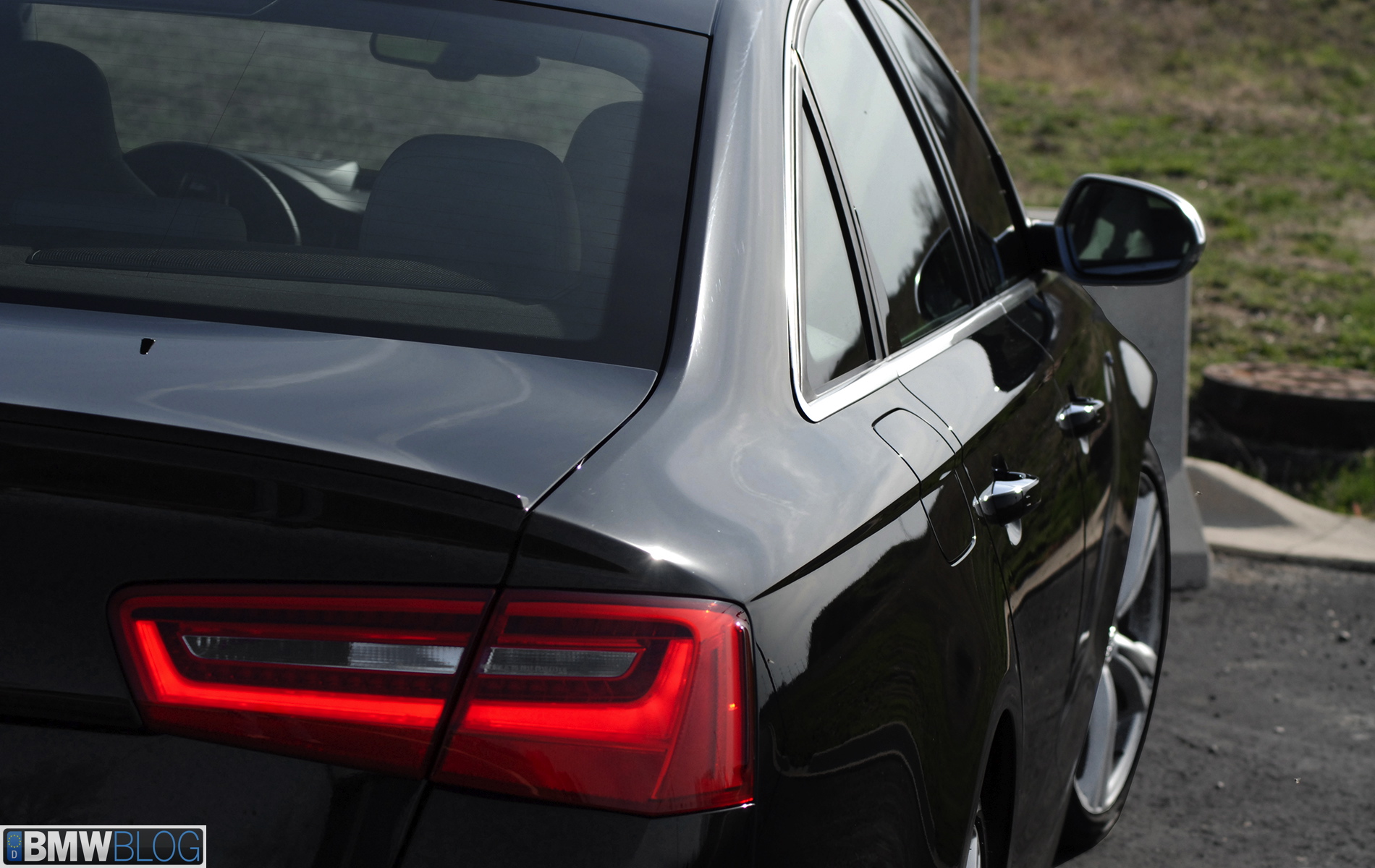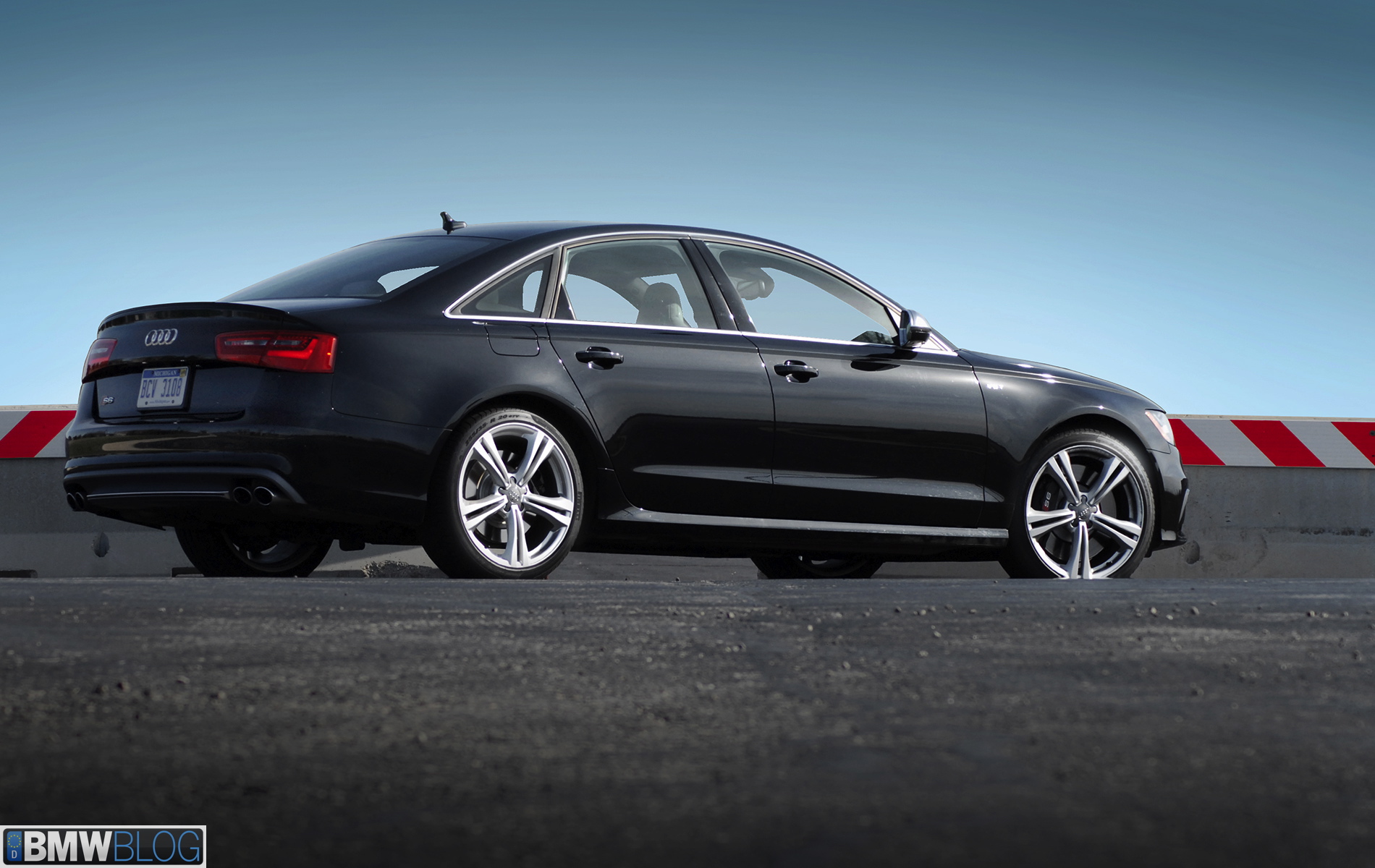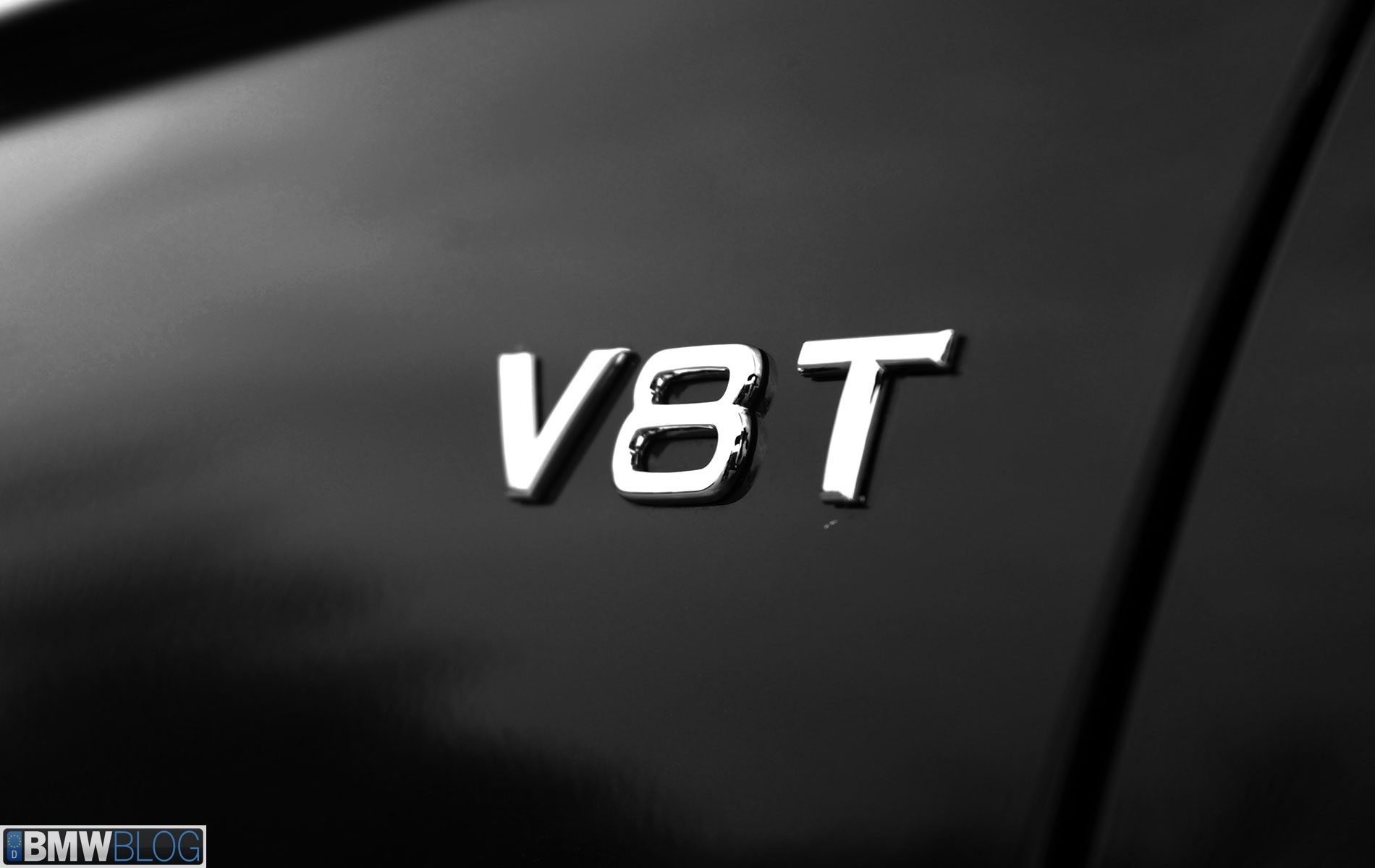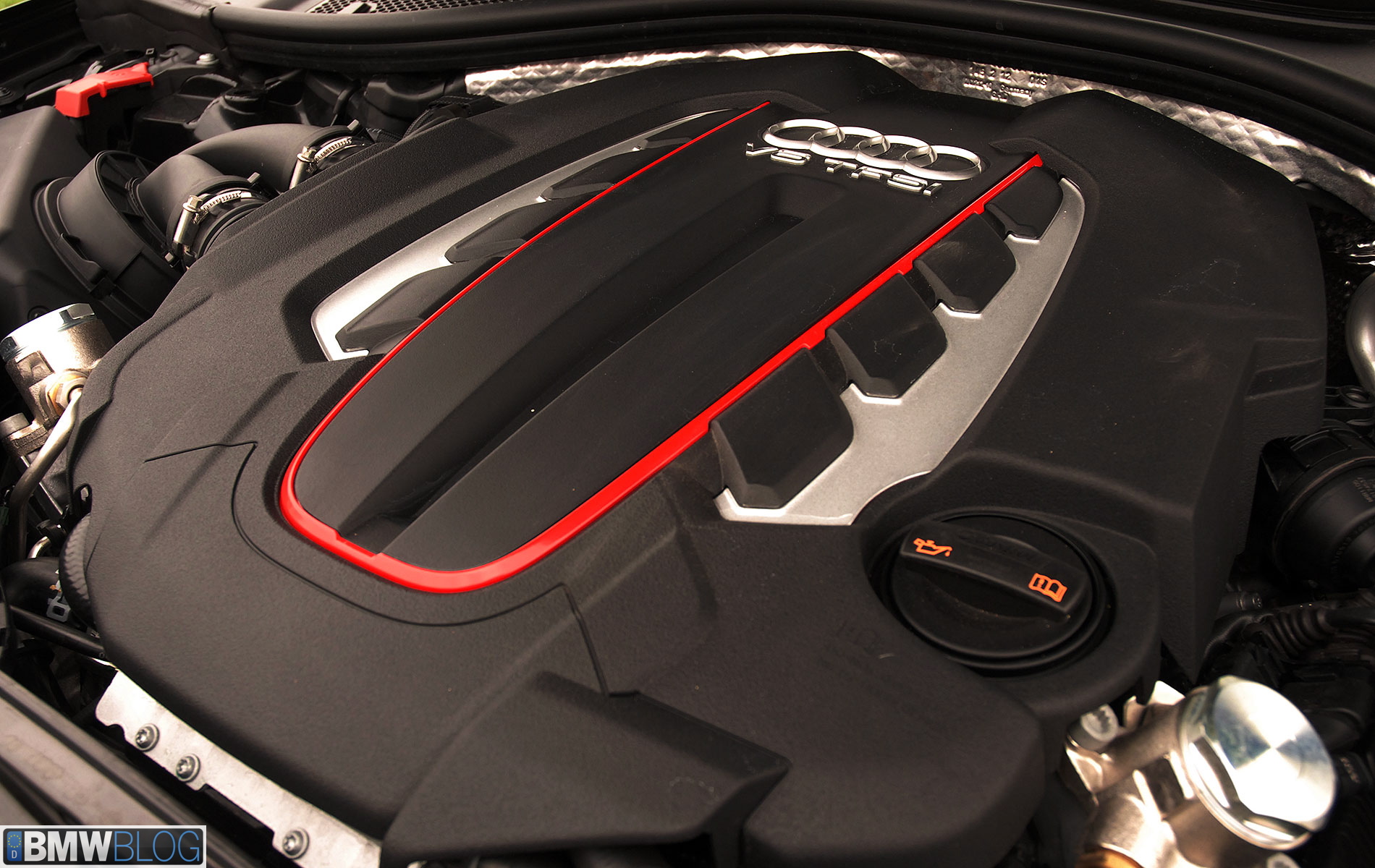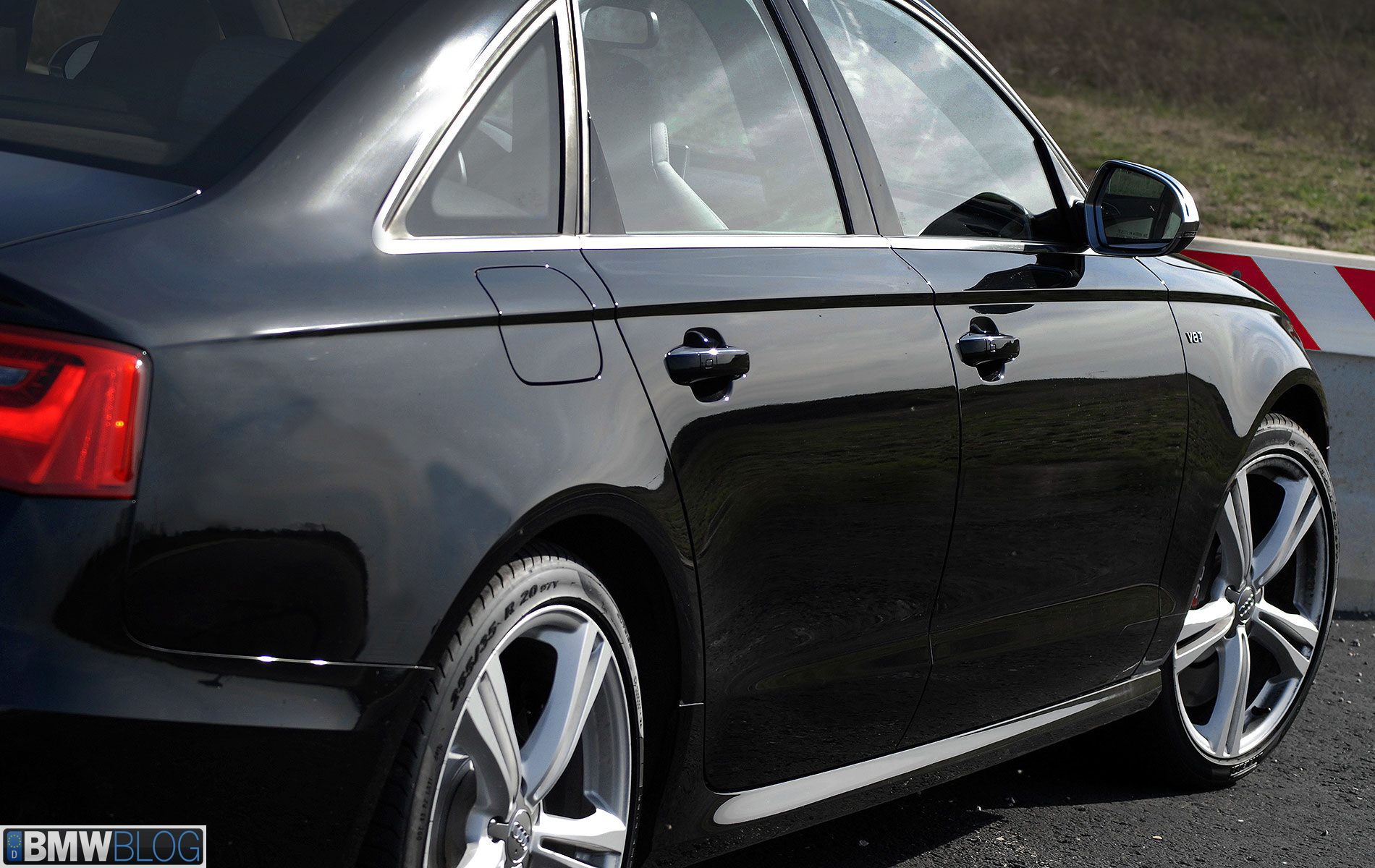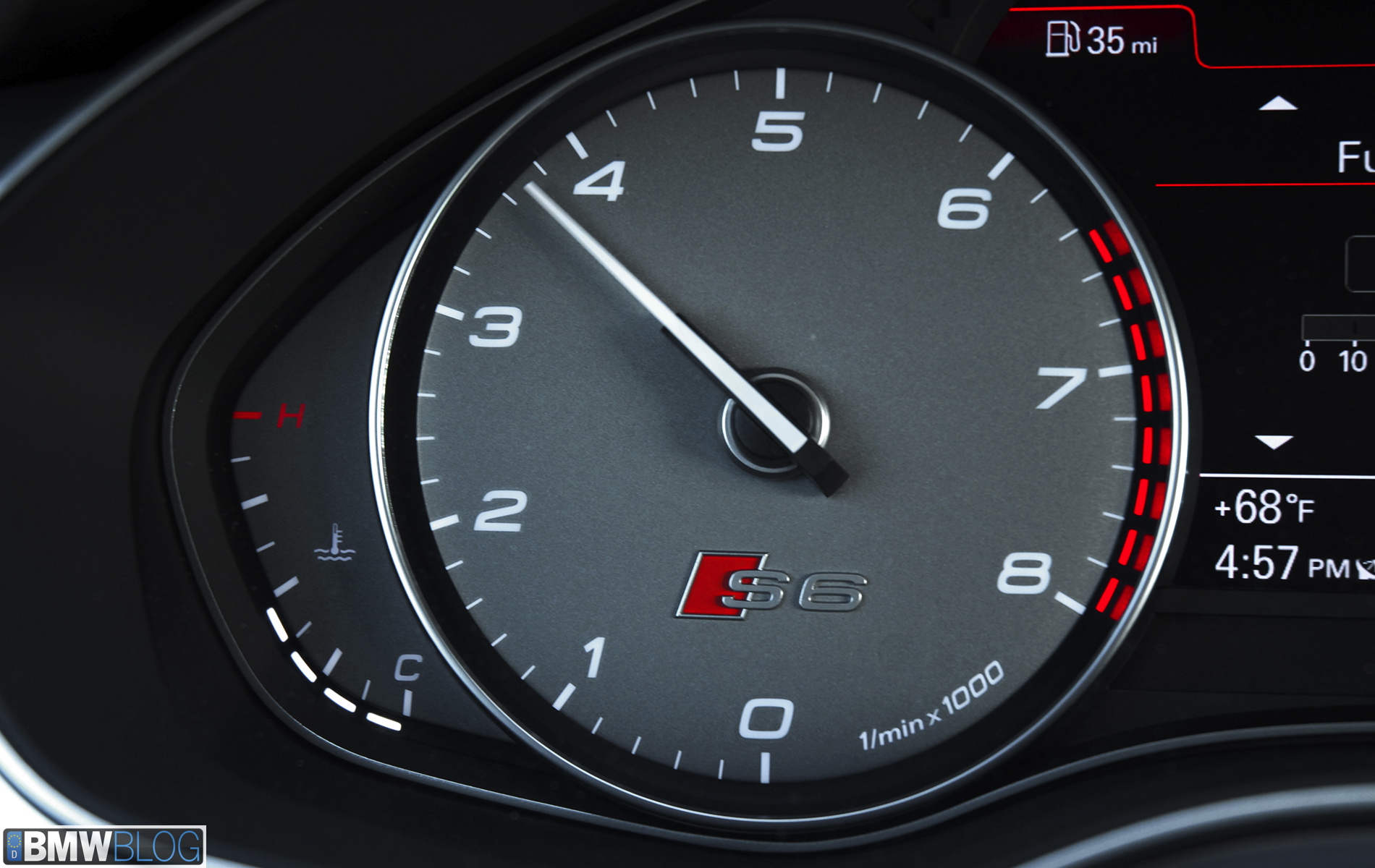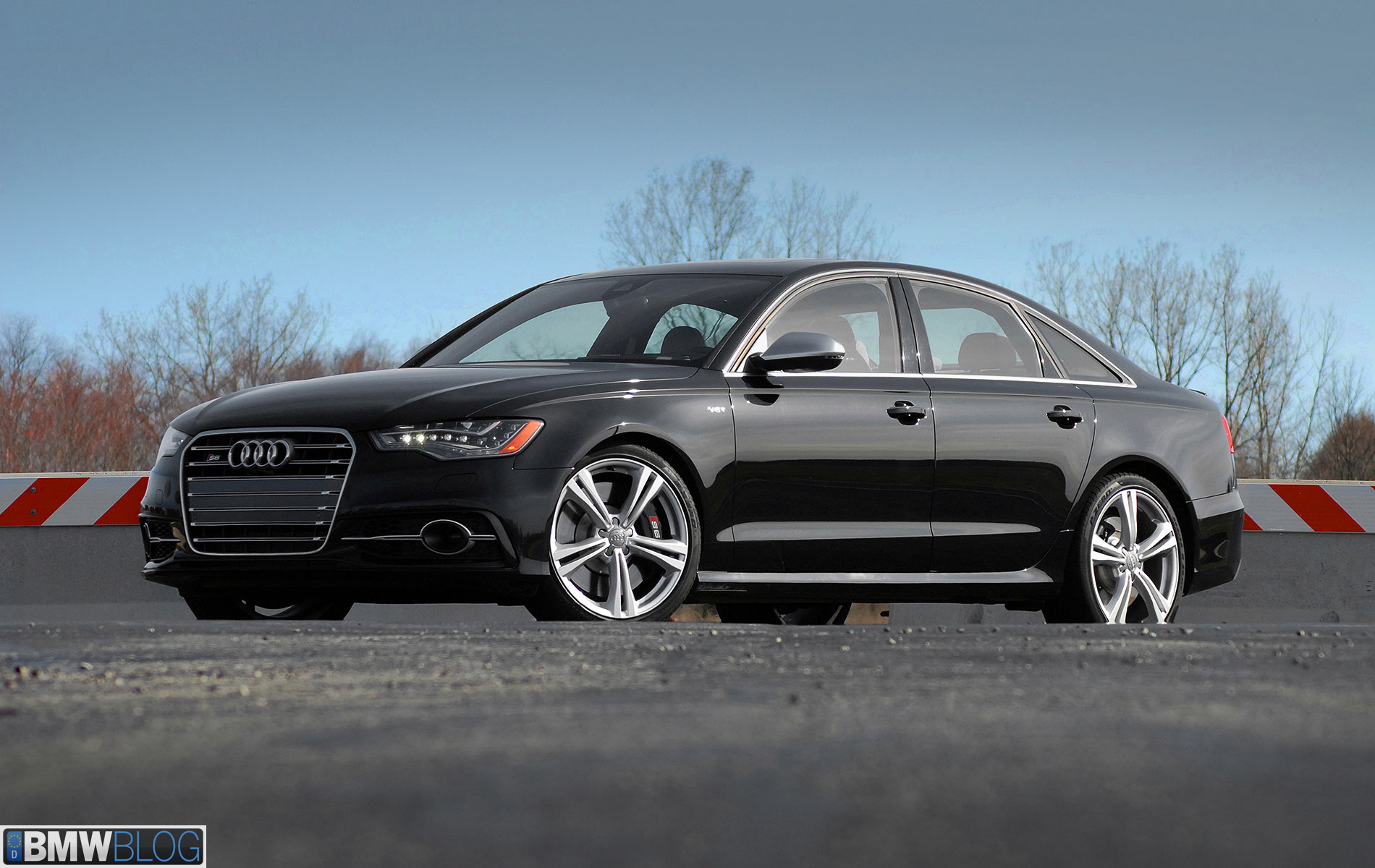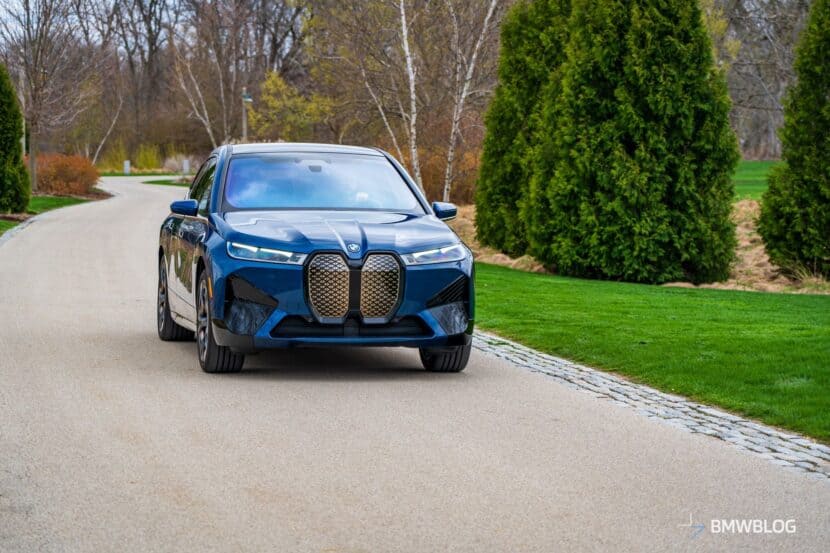The good old days of the German sport sedan were much simpler times. Your carmaker of choice – be it Audi, BMW or Mercedes – would bolt together a supremely competent family sedan that blended high-class comfort and luxury with the ability to cruise leisurely at triple-digit speeds should the need arise. Then, for those who demanded more performance, their motorsport departments would simply massage the power, the chassis and the cosmetics before appending special letters to the badge – S, M or AMG, respectively. Voila, your uber-sedan is ready!
But that was all before the turbo revolution of the last few years. Where we once were given the choice of either standard or hot-rod variants, today there exists a broad spectrum of performance options thanks to the nearly infinite tuning possibilities of the modern turbo engine.
Within BMW alone, most models offer a Sport package, an M Sport package and a full-on M model. Mercedes-Benz has Sport and AMG packages as well as proper AMG models, with optional enhanced performance packages for those, even. Audi offers a similar progression, starting with its S-Line and moving up to S models before reaching the pinnacle RS designation.
With so many choices, striking the right balance between functionality and performance is harder than ever. Enter the Audi S6, freshly updated for 2013 with a fresh makeover and a new twin-turbo V8 feeding its legendary quattro drivetrain. While it represents the top of the mid-size A6 lineup in America (we don’t get the true range-topper RS6, which is built exclusively as a wagon), it actually ends up a bit of an in-betweener in the market. Its most direct BMW competitor, for instance isn’t the M5 but rather the 550i with the M Sport option.
Like the last-gen BMW M5, Audi’s previous S6 was powered by a high-revving V10, in this case a 5.2-liter that shared its basic architecture with the engine in Lamborghini’s Gallardo. Large displacement and high revs make for a thirsty beast though, and in the face of stricter emissions and fuel economy standards, Audi chose a more efficient path for 2013 and beyond. The new formula, as adhered to by BMW and Mercedes as well, involves a smaller direct-injected V8 for everyday efficiency, boosted by a pair of turbos when additional performance is required.
The 4.0-liter TFSI V8 makes 420 horsepower and 405 lb-ft, swapping a modest drop in horsepower (from 429) for a bump in torque (from 398) over the outgoing V10. The sole transmission for the S6 is a 7-speed S-tronic dual-clutch unit feeding power to each corner via quattro all-wheel-drive. It’s a potent combination, allowing a 4.5-second bolt to 60 mph from a dead stop.
While the 4400-pound S6 can keep up with genuine sports cars in the sprint, it’s also quite docile to drive in real-world traffic. Unlike its V10 predecessor, peak torque can be summoned with as little as 1400 rpm on the tachometer. You don’t have to drive this one like an animal to dip into its performance potential.
Power delivery is exceptionally linear, feeling much more like a supercharged engine than one boosted by turbos. Missing is that wallop of out-of-nowhere torque that often accompanies high-strung V8s when the boost lights up. Instead, it has strength from down low and just keeps making more as the tach winds up. This engine is a distance runner more than a sprinter, eager to soak up long stretches of Autobahn at triple-digit speeds without breaking a sweat.
Cruising at a more relaxed pace allows the S6 to take advantage of its cylinder-deactivation feature. In steady-state driving where its only job is to maintain momentum, the engine seamlessly shuts down four of its cylinders, effectively becoming a naturally aspirated 2.0-liter miser. This works in conjunction with active engine mounts that counteract the resulting arrhythmia and an active noise cancelling system that tunes out unpleasant frequencies in the cabin. Automatic start-stop is also standard, and this whole collection of energy conservation tricks results in EPA ratings of 17 mpg city/27 mpg highway/20 mpg combined, though we barely broke through the city EPA rating in over 300 miles of mixed driving.
The 7-speed gearbox shifts quickly, as expected of its dual-clutch arrangement, though it seems a little too eager to upshift, even in its sport setting. Presumably the priority here is fuel efficiency, which begs the question of why Audi chose a 7-speed DSG when more efficient 8-speed automatics are available. Manual shifting remains an option with either paddle shifters or the shift lever, but otherwise the transmission is a bit of a letdown for performance-minded drivers.
Common wisdom holds that all-wheel drive offers an undeniable performance advantage, but whether it makes for a more engaging driving experience remains the subject of much debate. Without a doubt, the S6’s 0-to-60 sprint benefits greatly from all four wheels clawing at the asphalt when torque is unleashed upon it. But what about fast corners on a perfect road?
Having heard the critique of auto journalists and driving enthusiasts alike, Audi has made a conscious effort in recent years to dial out the traditional front-biased chassis dynamics of its Quattro system. That means addressing both simple matters like tuning the front-to-rear torque split as well as more complex issues like getting more of the engine’s mass behind the front axle for better overall balance.
The electronically controlled “sport” center differential favors the rear axle in the 2013 Audi S6, delivering 60 percent of the torque there under normal conditions, and as much as 80 percent under severe conditions. Should conditions warrant, as much as 70 percent of the torque can be sent to the front. The result is a chassis that feels much more neutral than previous generations, though it’s still no replacement for the thrills of tail-out oversteer.
Audi’s steering feel has long been the other point of contention with drivers in the know. Unfortunately, the S6’s electrically boosted power steering does more to uphold the tradition than eradicate it. Steering effort is light at low speeds and predictably firmer at higher speeds, but communication still gets diluted from the road to the tires to the steering wheel. Audi isn’t alone in the dilemma of how to deliver meaningful road feel while filtering out unwanted feedback like potholes and expansion joints, but its cars still suffer from a more synthetic feel than its peers.
Thankfully, the rest of the S6’s chassis behaves better than the steering. The suspension benefits from air springs, which compensate automatically for driving conditions and load to deliver an excellent balance between handling performance and overall comfort. There is no selectable damper setting, however, as with some if its competitors.
The brakes are up to the task of hauling the big sedan down safely from serious speeds, though they’re probably less than ideal for a track day. Conventional cast iron rotors measure up at 15.7 inches up front and 14.0 inches in back, squeezed by four-piston and two-piston calipers respectively. Finished in black with the trademark “S” logos, these are prominently visible behind the S6’s standard 19-inch alloys, wearing 255/40 performance rubber at each corner.
Forever the underdog in the race for German sedan supremacy, Audi has gained a lot of lost ground with excellent design, both inside and out. Clean, minimalist exterior styling combined with rich, elegant interiors has been its game plan for more than a decade now, and this new S6 isn’t about to derail that.
A clean-sheet design for 2013, the new S6’s exterior is less controversial than a BMW 5-series and less fussy than the recently updated Mercedes E-class. That said, it also breaks no new ground in terms of style, essentially the latest evolution of a form language that debuted before Y2K. Reshaped grilles and new all-LED lighting are the main differentiators between this and previous A6/S6 generations, and the average guy on the street probably still can’t tell an S6 from an S4 or S8 at first glance.
The interior upholds Audi’s tradition of combining elegance with technical sophistication through superior material selection. The S6 cockpit is a classy blend of real carbon fiber and aluminum with sumptuous leather. The sport seats even feature perforated and diamond-quilted inserts, lending it an air of bespoke exclusivity that was once a rarity served up only on cars like Aston Martin and Bentley. Back seat passengers are treated to generous space and their own climate controls.
Audi’s MMI system, once regarded as the standard in multi-function interfaces, remains simple and easy to navigate with its direct-jump buttons. Audi also mounts the single-purpose audio volume knob on the center console, adjacent to the main MMI controller; while this is convenient when your hands are already there, it’s a bit less intuitive when your hands are on the steering wheel, and it seems to encourage one-handed steering accompanied by the “Ingolstadt Lean.” In contrast to its competitors’ decision to mount fixed iPad-like displays on the dash, Audi installs a unit that neatly disappears when not needed for a cleaner, less distracting appearance and perhaps a reduced likelihood of a miscreant breaking into to nab what appears to be a valuable tablet.
With the latest S6, Audi is determined not to give up any ground to either Mercedes or BMW in the hot sedan space. It’s a fast, comfortable, good-looking missile that checks all of the right boxes on paper. Its only shortcoming – and this only applies to the fringe loonies who actually, you know, like to flog their expensive toys on a twisty backroad – is in the driver engagement department, where too many layers of electronics separate the guy at the wheel from the action at the road.
Article sponsored by Audi of Bedford



